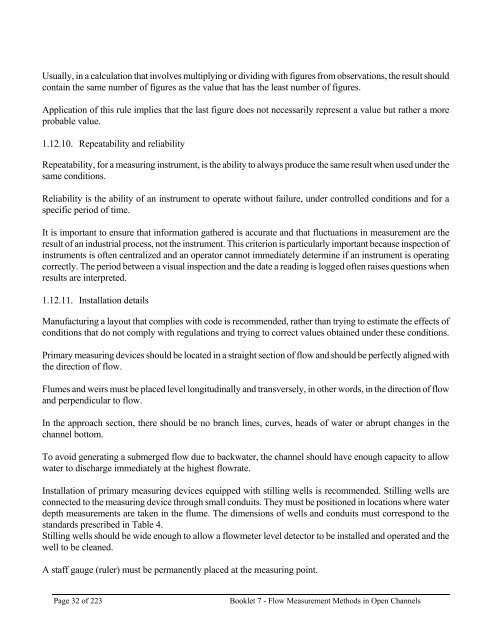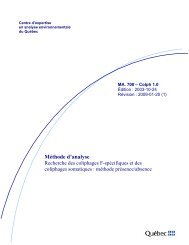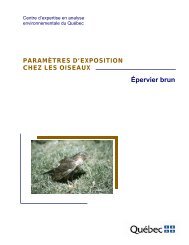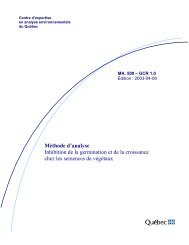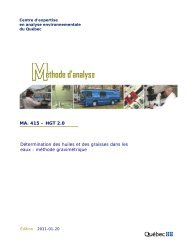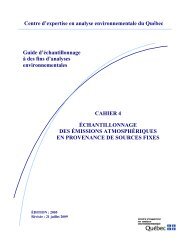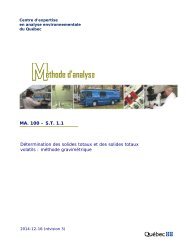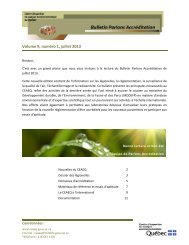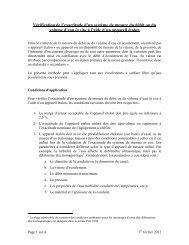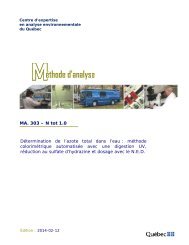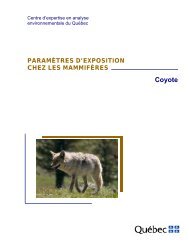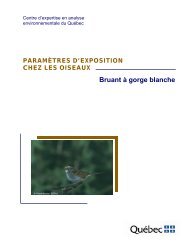Booklet 7 - Flow Measurement Methods in Open Channels
Booklet 7 - Flow Measurement Methods in Open Channels
Booklet 7 - Flow Measurement Methods in Open Channels
Create successful ePaper yourself
Turn your PDF publications into a flip-book with our unique Google optimized e-Paper software.
Usually, <strong>in</strong> a calculation that <strong>in</strong>volves multiply<strong>in</strong>g or divid<strong>in</strong>g with figures from observations, the result shouldconta<strong>in</strong> the same number of figures as the value that has the least number of figures.Application of this rule implies that the last figure does not necessarily represent a value but rather a moreprobable value.1.12.10. Repeatability and reliabilityRepeatability, for a measur<strong>in</strong>g <strong>in</strong>strument, is the ability to always produce the same result when used under thesame conditions.Reliability is the ability of an <strong>in</strong>strument to operate without failure, under controlled conditions and for aspecific period of time.It is important to ensure that <strong>in</strong>formation gathered is accurate and that fluctuations <strong>in</strong> measurement are theresult of an <strong>in</strong>dustrial process, not the <strong>in</strong>strument. This criterion is particularly important because <strong>in</strong>spection of<strong>in</strong>struments is often centralized and an operator cannot immediately determ<strong>in</strong>e if an <strong>in</strong>strument is operat<strong>in</strong>gcorrectly. The period between a visual <strong>in</strong>spection and the date a read<strong>in</strong>g is logged often raises questions whenresults are <strong>in</strong>terpreted.1.12.11. Installation detailsManufactur<strong>in</strong>g a layout that complies with code is recommended, rather than try<strong>in</strong>g to estimate the effects ofconditions that do not comply with regulations and try<strong>in</strong>g to correct values obta<strong>in</strong>ed under these conditions.Primary measur<strong>in</strong>g devices should be located <strong>in</strong> a straight section of flow and should be perfectly aligned withthe direction of flow.Flumes and weirs must be placed level longitud<strong>in</strong>ally and transversely, <strong>in</strong> other words, <strong>in</strong> the direction of flowand perpendicular to flow.In the approach section, there should be no branch l<strong>in</strong>es, curves, heads of water or abrupt changes <strong>in</strong> thechannel bottom.To avoid generat<strong>in</strong>g a submerged flow due to backwater, the channel should have enough capacity to allowwater to discharge immediately at the highest flowrate.Installation of primary measur<strong>in</strong>g devices equipped with still<strong>in</strong>g wells is recommended. Still<strong>in</strong>g wells areconnected to the measur<strong>in</strong>g device through small conduits. They must be positioned <strong>in</strong> locations where waterdepth measurements are taken <strong>in</strong> the flume. The dimensions of wells and conduits must correspond to thestandards prescribed <strong>in</strong> Table 4.Still<strong>in</strong>g wells should be wide enough to allow a flowmeter level detector to be <strong>in</strong>stalled and operated and thewell to be cleaned.A staff gauge (ruler) must be permanently placed at the measur<strong>in</strong>g po<strong>in</strong>t.Page 32 of 223<strong>Booklet</strong> 7 - <strong>Flow</strong> <strong>Measurement</strong> <strong>Methods</strong> <strong>in</strong> <strong>Open</strong> <strong>Channels</strong>


